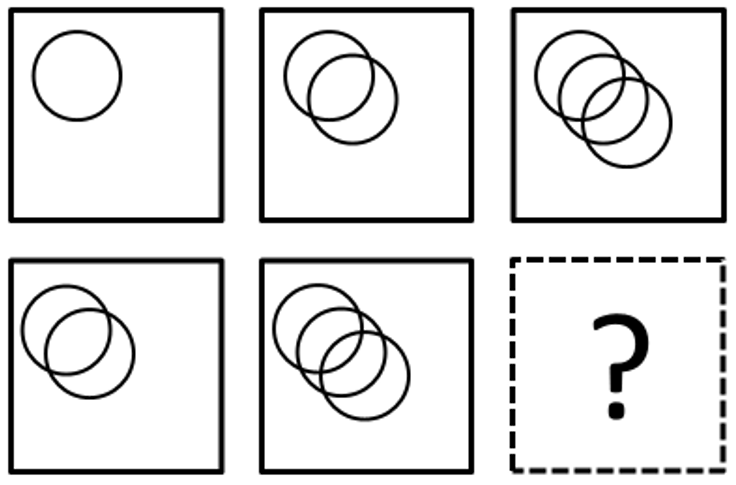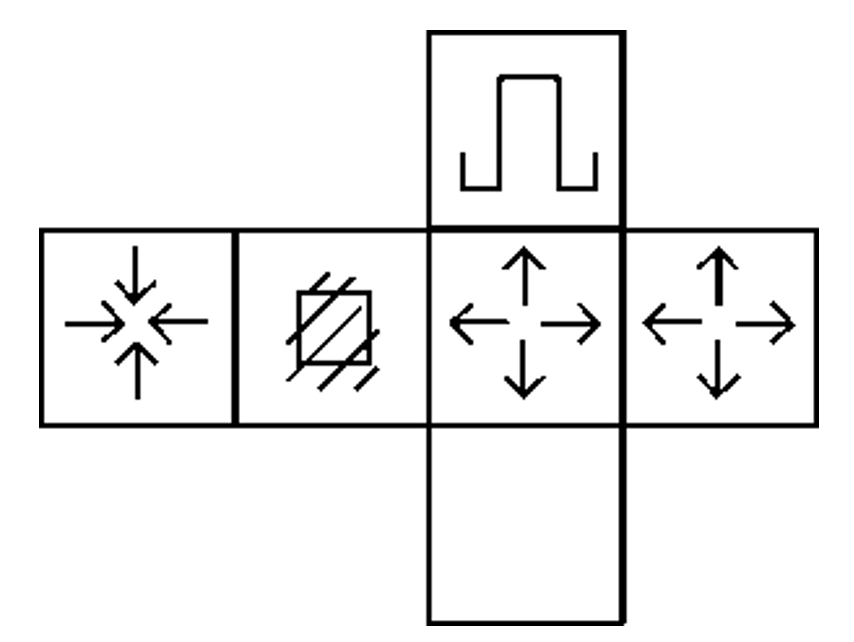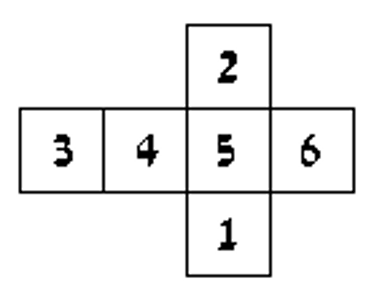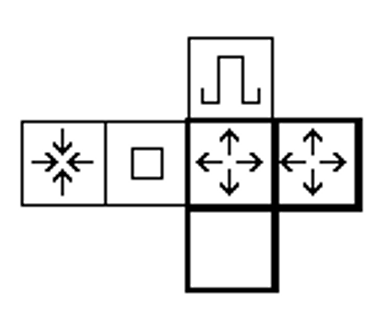 Free ISEB Common Pre Test Practice & Info [2025]
Free ISEB Common Pre Test Practice & Info [2025]
The Independent Schools Examination Board (ISEB) test is a standardized assessment used by many independent schools in the United Kingdom to evaluate students for admission. Administered in the 6th and 7th grades, the ISEB exam is designed to measure the academic abilities and potential of students applying to various independent senior schools both in the UK and internationally.
This page offers free practice questions, the ISEB test is computerized and can be taken in your child's prep school or one of the senior schools you're applying for. The test is also adaptive, meaning that the difficulty increases the more your child succeeds.
What Subjects are on The ISEB Pre Tests?
The ISEB Pre-tests cover four subjects, taking a total of approximately 2 hours and 15 minutes. These subjects are:
- English - This part evaluates reading comprehension, writing skills, and knowledge of grammar and vocabulary. The time allotted is 40 minutes.
- Mathematics - This part examines numerical skills, problem-solving abilities, and understanding of mathematical concepts, also with a 40-minute time limit.
- Verbal Reasoning – This section assesses language usage, logical thinking, and critical reasoning skills. It is timed at 25 minutes.
- Non-Verbal Reasoning – This section tests abstract reasoning and spatial skills through 2D and 3D questions, with a 30-minute time limit.
Let's begin with the English section.
Free ISEB Pre Tests English Practice Questions
The questions in the section are either reading comprehension (answering according to a short text) or grammar.
Text: The British Passion for Tea
- The British are famous for their love of tea, which is a staple of their daily routines and social interactions. According to a recent survey, 80% of British adults enjoy at least one cup of tea every day, with many consuming several cups throughout the day. On average, a British person spends about two months of their life making and drinking tea. Additionally, tea-related content is prevalent on social media, with people sharing their favorite blends, afternoon tea experiences, and pictures of their tea setups multiple times a week.
- The renowned author George Orwell once commented on the British tea culture, observing that for many, tea is not just a beverage but a ritual that offers comfort and a sense of tradition. This view underscores the cultural significance of tea in Britain, where tea breaks are often moments of relaxation and socialization. Unlike in other cultures where beverages might be consumed quickly or alone, the British tea tradition values the shared and leisurely aspects of enjoying a cup of tea.
- The origins of this tea fascination can be linked to historical and economic factors. Britain's trade history, particularly with China and India, introduced a variety of tea blends to the country, making tea an accessible and beloved drink. Moreover, the influence of British colonial history and the establishment of tea houses and afternoon tea traditions have cemented tea's place in British culture. From the delicate flavors of Earl Grey to the robust taste of English Breakfast, British tea is celebrated for its variety and tradition.
Q1 Look at paragraph 1.
How long does the average British person spend making and drinking tea?
- Four weeks
- Several times a day
- Two months
- 80% of adults
- A few minutes
A1: The correct answer is C.
Paragraph 1 states, "On average, a British person spends about two months of their life making and drinking tea." This indicates the duration mentioned in the context of the average British person's tea habits.
Q2: The sentence below is from paragraph 3.
Britain's trade history, particularly with China and India, introduced a variety of tea blends to the country, making tea an accessible and beloved drink.
Which word is closest in meaning to 'accessible'?
- Reachable
- Affordable
- Convenient
- Attainable
- Available
A2: The correct answer is E.
In the context of the sentence, "accessible" means that tea is easily obtained or available to people. "Available" best captures this meaning, indicating that tea can be readily found and enjoyed. "Reachable," "affordable," "attainable," and "convenient" are related but do not fit as precisely in this context.
ISEB Pre-tests English Tip – Start from the Questions:
One of the most effective strategies for reading comprehension is to read the questions before the text. Reading the text first can take up a lot of time, especially since you'll need to refer back to it after reading the questions. By starting with the questions, you can often determine where the answers are likely to be found, saving time and allowing you to focus on the relevant information for each question.
Q3: Choose the word that best completes the sentence below.
It's important to _______ attention during class.
- pay
- paid
- paying
- pays
- payed
A3: The correct answer is A.
In this sentence, we need a verb in the base form to complete the phrase. Let's analyze each option:
- pay: This is the correct base form of the verb, which fits the sentence structure.
- paid: This is the past tense form, which doesn't fit the context of the present action.
- paying: This is the present participle form, which doesn't fit as the main verb in this sentence.
- pays: This is the third person singular present form, which doesn't fit the subject "you" implied in the sentence.
- payed: This is an incorrect spelling of "paid."
Therefore, the correct answer is A. pay. The sentence should read: "It's important to pay attention during class."
Q4: Select the word that does not fit in the sentence once it is rearranged.
book the red very reads she quickly
- book
- very
- the
- she
- quickly
A4: The correct answer is B.
First, let's identify the words and rearrange them to form a meaningful sentence. The words are: book, the, red, very, reads, she, quickly.
Possible meaningful sentence: "She reads the red book quickly." In this sentence, the words "she," "reads," "the," "red," "book," and "quickly" are necessary to create a grammatically correct and meaningful sentence. The word "very" does not fit into the sentence contextually or grammatically. So, the sentence without the unnecessary word is: "She reads the red book quickly." Therefore, the word that does not fit in the sentence is C. very.
The ISEB Common Pre Tests English section is demanding, requiring you to showcase your reading, comprehension, and interpretation abilities, along with a solid grasp of grammar. However, with thorough preparation and effective problem-solving5 techniques, your child can achieve their best performance.
Let's move on to the mathematics section.
Free ISEB Pre Tests Mathematics Practice Questions
Q5: Which of the following numbers is a multiple of 13?
- 89
- 75
- 133
- 182
- 165
A5: The correct answer is D.
While you can perform full calculations for each answer – we recommend memorizing quick mathematical calculations – especially the square of a number (X2) – for numbers up to 20.
In this instance, you can multiply 13 by 5, 10, and by itself, and then review the answers:
13 X 5 = 65
13 X 10 = 130
13 X 13 = 169
Now you can compare the numbers in the answers and see if they are an addition or subtraction of 13, 26, etc., until reaching the correct answer:
- 89 – 65 = 24, which means that is not the correct answer.
- 75 - 65 = 10, which means that is not the correct answer.
- 133 – 130 = 3, which means that is not the correct answer.
- 182 – 169 = 13, which means that is the correct answer.
- 169 – 165 = 4, which means that is not the correct answer.
Q6: Which decimal is between 1/3 and 3/5?
- 0.25
- 0.30
- 0.55
- 0.70
- 0.85
A6: The correct answer is C.
When comparing fractions to decimals, it helps to convert the fractions to decimals:
1/3 ≈ 0.33, and 3/5 = 0.6
Now we can eliminate a few options:
0.25 can be eliminated as it is below 0.33.
0.40 can also be eliminated as it is below 0.33.
0.70 can be eliminated as it is above 0.6.
0.85 can also be eliminated as it is above 0.6.
Therefore, the decimal that fits between 1/3 and 3/5 is 0.55.
ISEB Mathematics Tip – Eliminate Smartly:
In multiple-choice questions, especially in calculations, you can quickly eliminate options by comparing the distractors. For example, in the last question, you can start by examining 0.3 or 0.7, and if you can rule the first for being too small, or the second for being too large, then you can rule out 0.25 and 0.85, accordingly, without wasting time examining them.
Q7: John jogs for 30 minutes every morning.
If he covers a distance of 6 kilometers in that time, what is his average jogging speed?
- 0.1 km per minute
- 0.15 km per minute
- 0.25 km per minute
- 0.2 km per minute
- 0.3 km per minute
A7: The correct answer is D.
To determine John's average jogging speed, we use the formula:
Average speed = Total distance / Total time
First, use the given time in minutes:
Time = 30 minutes
Next, use the total distance covered:
Total distance = 6 kilometers
Now, calculate the average jogging speed:
Average speed = 6 km / 30 minutes = 1/5 = 0.2 km per minute
Therefore, John's average jogging speed is 0.2 km per minute.
Q8: A pizza is divided into 8 equal slices. What angle does 3 slices account for?
- 45˚
- 135˚
- 90˚
- 180˚
- 270˚
A8: The correct answer is B.
The pizza represents a circle, which is 360˚. If we divide the circle into 8 equal pieces, each piece would be 360˚ / 8 = 45˚.
Therefore, 3 pieces of pizza would account for 45˚ x 3 = 135˚.
ISEB Pre Tests Results:
The ISEB pre tests is distinctive because it does not provide a specific score or set of results. Instead, once your child completes the test, the results are sent directly to the senior schools you have applied to, and you can contact these schools for more information. Each school evaluates your child's performance differently, focusing on particular traits.
Here are some important points to consider that can impact your child's success on the test:
- Interactive Nature: The test is adaptive, meaning that as your child answers more consecutive questions correctly, the difficulty level increases. Successfully answering these more challenging questions can place your child in a stronger position than answering a larger number of easier questions but making many mistakes.
- Comparative Success: Your child's performance is compared to that of other students. The test is administered in various formats with different questions depending on the date and overall success rates. This means the test is normalized, so your child should aim to outperform peers of the same age group.
- Communicate with Schools: Since each senior school receives your child's results independently, it is crucial to contact the schools directly. This will help you understand what specific areas your child should focus on in preparation for the test.
Free ISEB Pre Tests Verbal Reasoning Practice Questions
Q9: Which one letter completes all the words below?
__ake __ind __ite __ook
a. B
b. F
c. L
d. T
e. R
A9: The correct answer is A (the letter B).
To find the letter that completes all the given words, we try each letter in the blank and see if it forms a meaningful word.
- B:
Bake Bind Bite Book - F:
Fake Find Fite (not a word) Fook (not a word) - L:
Lake Lind (not a word) Lite (not a word) Look - T:
Take Tind (not a word) Tite (not a word) Took - R:
Rake Rind Rite Rook (not a word)
Q10: Select the pair of words that are closest in meaning to each other.
- happy, joyful
- sad, cheerful
- large, tiny
- fast, slow
A10: The correct answer is A.
To find the pair of words that are closest in meaning, let's analyze each pair:
- happy, joyful:
o Happy means feeling or showing pleasure or contentment.
o Joyful means feeling, expressing, or causing great pleasure and happiness.
o These words are synonymous, both expressing a positive emotional state. - sad, cheerful:
o Sad means feeling or showing sorrow; unhappy.
o Cheerful means noticeably happy and optimistic.
o These words are antonyms, not synonyms. - large, tiny:
o Large means of considerable or relatively great size, extent, or capacity.
o Tiny means very small.
o These words are antonyms, not synonyms. - fast, slow:
o Fast means moving or capable of moving at high speed.
o Slow means moving or operating, or designed to do so, only at a low speed; not quick or fast.
o These words are antonyms, not synonyms.
Therefore, the correct answer is happy, joyful, as they are the pair of words that are closest in meaning to each other.
Q11: The first pair of words is related in some way.
Complete the second pair of words in the same way.
book : chapter tree : _________
- root
- forest
- leaf
- bark
- branch
A11: The correct answer is E.
To determine the relationship between the first pair of words and complete the second pair in the same way, let's analyze the relationship between "book" and "chapter":
- book : chapter:
o A chapter is a section or part of a book.
Now, we need to find a similar relationship for "tree": - tree : _________:
o A root is a part of a tree, but it does not relate to the structure in the same way as a chapter to a book.
o A forest is a collection of trees, which is the opposite relationship (whole to part, not part to whole).
o A leaf is a part of a tree, but it does not relate to the structure in the same way as a chapter in a book.
o A bark is a part of a tree, but it is more like an outer layer than a structural section.
o A branch is a section or part of a tree, similar to how a chapter is a part of a book.
Therefore, the correct answer is a branch because it represents a section or part of a tree, just as a chapter represents a section or part of a book.
ISEB Verbal Tip: Create Sentences
In the last two questions, you were given pairs of words, and to answer you had to identify the connection between the pairs. To effectively approach such questions (analogies, synonyms, antonyms, etc.), your child should be able to form a sentence that explains the relationship between the words (e.g., "a book is made of many chapters" or "furious means very angry"). To help your child develop this skill, practice reading books and paragraphs together and encourage them to interpret unfamiliar words using the context in which they appear.
Q12: Select the word that is most nearly opposite in meaning to the word in bold.
Fragile
- sturdy
- delicate
- weak
- soft
- brittle
A12: The correct answer is A.
To determine the word that is most nearly opposite in meaning to "fragile," we first need to understand its definition. "Fragile" means easily broken or damaged.
Now, let's analyze each of the possible answers:
- Sturdy means strongly and solidly built, not easily broken or damaged. This is the opposite of fragile.
- Delicate means fragile or easily broken. This is similar in meaning to fragile, not opposite.
- Weak means lacking strength. While it might be somewhat related, it is not directly opposite to fragile in the sense of being physically robust.
- Soft means yielding easily to pressure and might be considered somewhat delicate, but it is not the direct opposite of fragile.
- Brittle means hard but liable to break or shatter easily. This is similar in meaning to fragile, not opposite.
Therefore, the correct answer is A. sturdy, as it is the word that most nearly means the opposite of fragile.
Although the ISEB Common Pre Tests English and Verbal Reasoning sections may seem similar at first glance, a deeper examination reveals significant differences. The English section measures your child's understanding of written text and their proper use of English words. In contrast, the Verbal Reasoning section focuses on the meanings of words, logical connections between words, and comparisons.
Let's look at the final section of the ISEB Pre tests, the Non-Verbal Reasoning section.
Free ISEB Pre Tests Non-Verbal Reasoning Practice Questions
Q13: Below are five figures, four of which have a code of letters.
Choose the correct letters to complete the code to the figure on the right.

- Top: A Bottom: S
- Top: J Bottom: P
- Top: J Bottom: S
- Top: A Bottom: W
- Top: J Bottom: W
A13: The correct answer is D.
Let's decipher the code from the far-left figure:
- The far-left figure is a single arrowhead directed upwards.
- The next are two arrowheads directed downwards. Since both letters have changed, let's continue to see if we can get a hint of what each letter means.
- The middle figure is made of three arrowheads, directed upwards. We can also see that the Letter A in the top-right is visible again, meaning that there is a pattern repeating between the far left and the middle figure, and is represented in the upper-right spot. Since the only resemblance is the direction, we can deduce that the upper-right spot signals the direction of the arrowheads, and A means upwards. Notice that since the second figure also was built of arrowheads, but is completely different in terms of the code, the shape of the figure is not represented in the code.
- The fourth figure is once again one arrowhead, this time directed downwards. We can see that the upper-right spot is J, just like the second figure, validating our previous assumption. We can also see that the letter P in the bottom-left spot is repeating like in the far-left figure – which means that there is a pattern between the two. The resemblance is the number of arrowheads (1), which is marked with P.
- The fifth figure has two arrowheads facing upwards. We have already deduced that the top-right spot for this pattern is A (which eliminates answers b, c, and e). Now, to complete the code – the letter in the second to the left figure, in the bottom-left spot, would indicate two arrowheads – which is W, making answer d the correct answer.
Q14: Decide which of the five options should complete the matrix in the empty slot.

| a. |  |
| b. |  |
| c. |  |
| d. |  |
| e. |  |
A14: The correct answer is A.
Across the rows and down the columns, the number of circles increases by one from frame to frame. For example, in the top row and the first column, the first frame contains one circle, the second frame contains two circles, and the third frame contains three circles. Look at the bottom row. The first frame contains two circles, and the second frame contains three circles. Thus, the last frame will contain four circles.
ISEB Non-Verbal Tip – Look for Common Patterns:
Most of the questions in the Non-Verbal section of the ISEB test include figures, which are connected by specific patterns, either in a matrix form, next in series, etc. In most cases, a few common rules apply in said patterns – i.e., switching geometrical shapes (with specific positions), addition/subtraction of the number of sides/figures (like in the previous example), and clockwise/counterclockwise movement. Practice many spatial questions and learn how to intuitively look for those common patterns, to be able to quickly solve most questions with ease.
Q15: Select how the following 2D picture would look, if folded into 3D.

| a. |  |
| b. |  |
| c. |  |
| d. |  |
A15: The correct answer is C.

Option 1 – If the facet at the front and the facet on the top represent facets 5 and 2 respectively, then the facet on the right should be represented by facet number 6 rather than number 4. This option is incorrect.
Option 2 – If the facet on the right and the facet on the top represent facets 5 and 4 respectively, then the facet at the front should be represented by facet number 1 rather than number 2. This option is incorrect.
Option 3 – The facet at the front, top and right hand are represented by facets 5, 6, and 1 respectively. This is the correct answer.
Option 4 – Facets 3, 4, and 5 are situated in consecutive order and therefore they could not appear alongside each other as they do in this option but rather one after the other. This option is incorrect.

FAQ's
A good ISEB pre tests score can vary depending on the school you are applying to, as different schools have different benchmarks. However, generally speaking:
- Top Schools: Aim for a score of 65% or above.
- Competitive Schools: A score in the range of 55%-65% is usually competitive.
- Moderate Schools: Scores around 45%-55% are typically acceptable.
To prepare effectively for the ISEB Pre Tests, start by familiarizing yourself with the test format through official practice papers available on the ISEB Pre Tests website.
Focus on mastering the specific syllabus content for Mathematics, English, Verbal Reasoning, and Non-Verbal Reasoning. Practice under timed conditions to improve time management. Regularly review your progress through mock tests and adapt your study plan based on performance analysis.
Ensure a balanced approach with steady, consistent practice.


